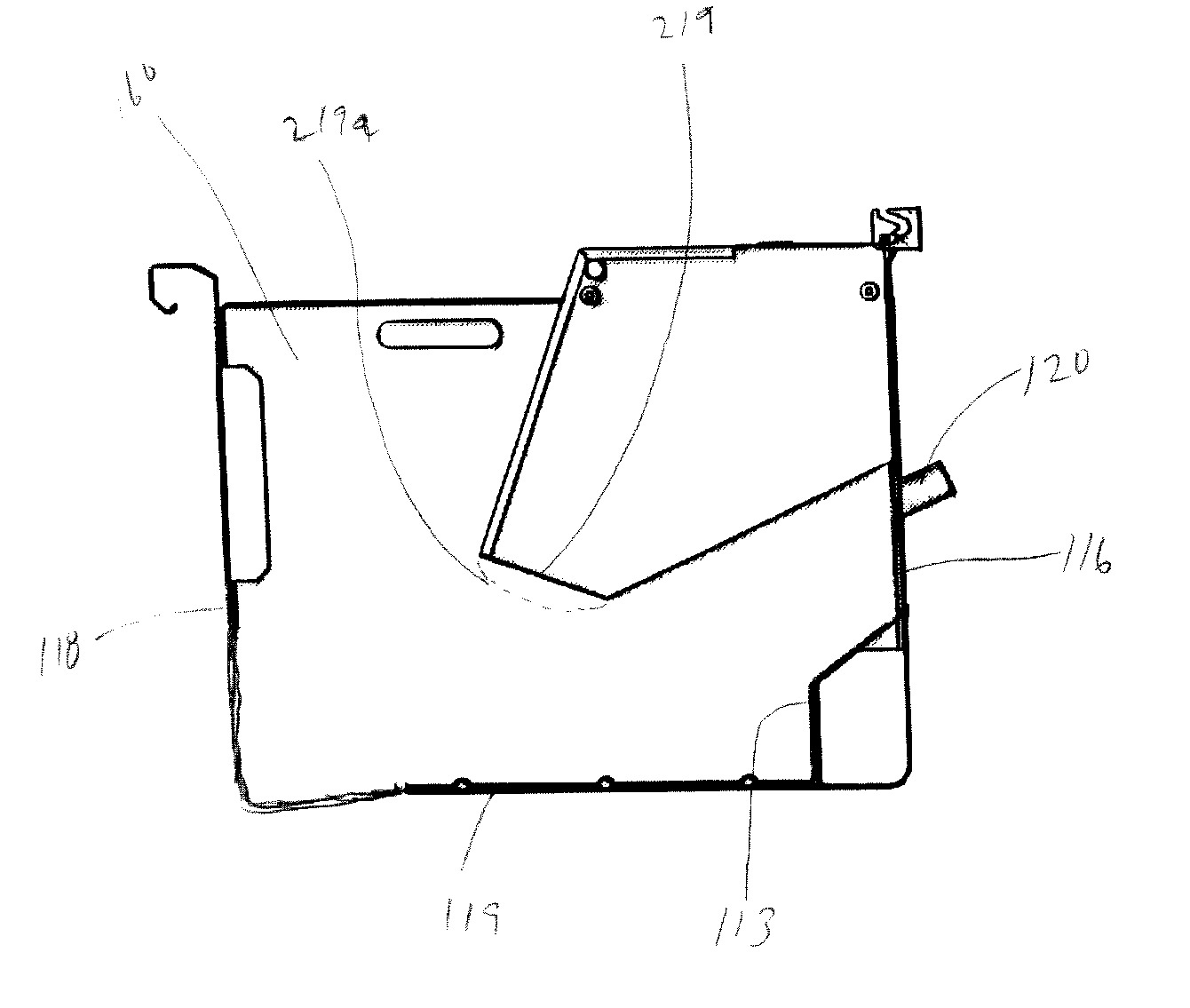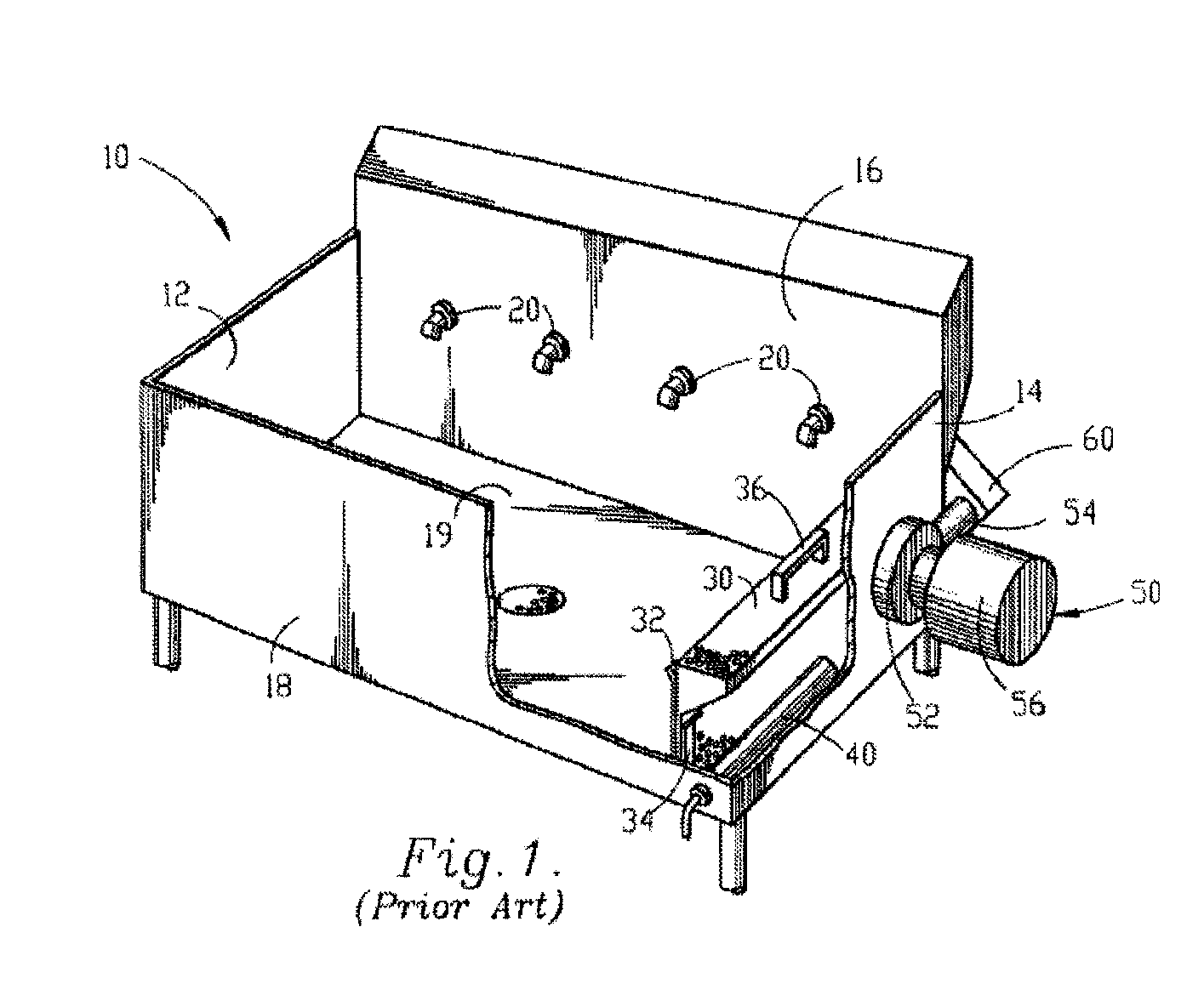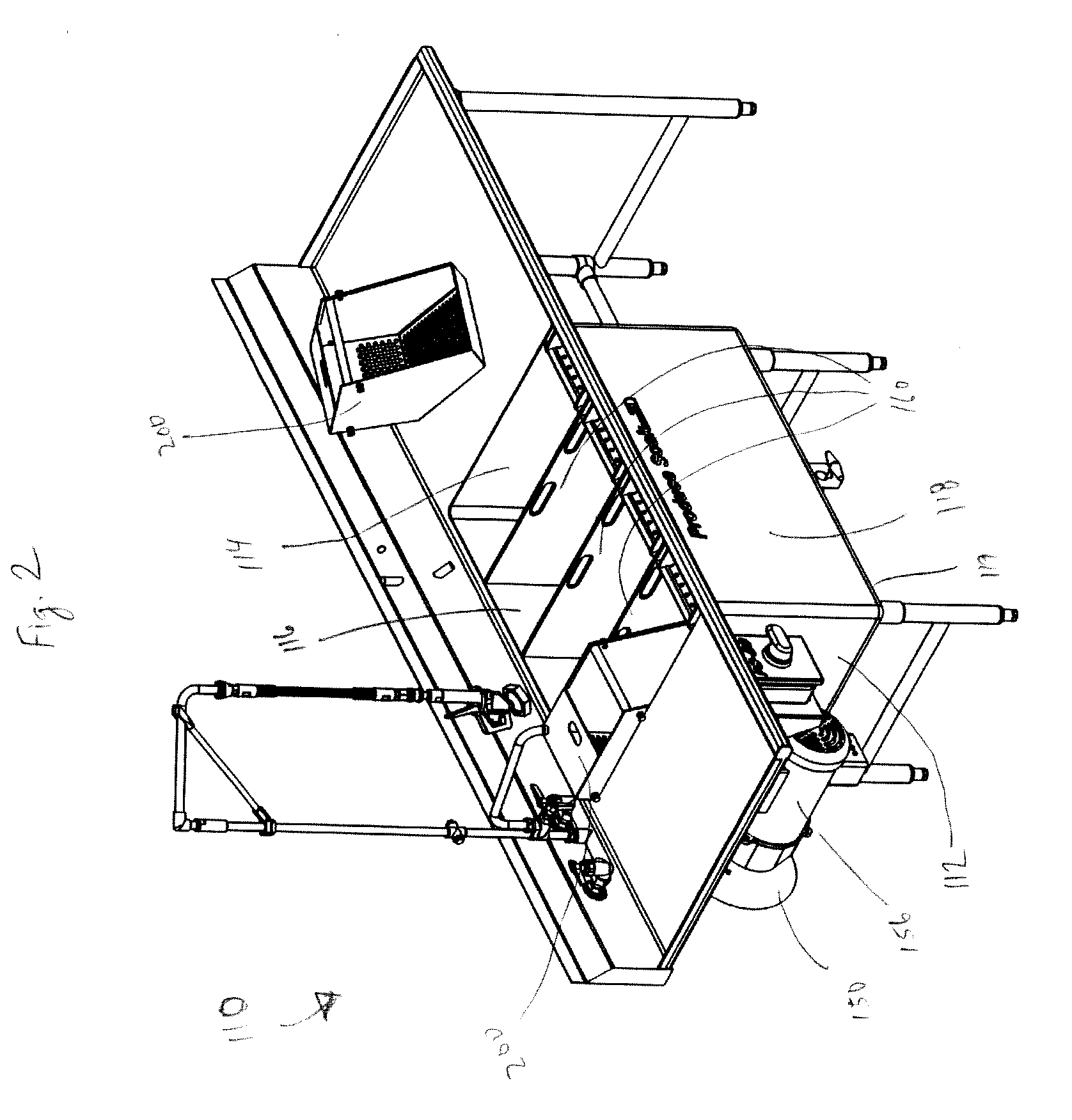Produce washer and method for continuous motion washing machine
a technology of producing washer and washing machine, which is applied in the direction of washing/rinsing machines for tableware, cleaning using liquids, house cleaners, etc., can solve the problems of performance of the machine, affecting the overall efficiency of the machine, and the difficulty of unloading small items such as produce from the wash tank of the continuous motion washing machine, etc., to achieve the effect of increasing the flow velocity, reducing the disruption of recirculating motion, and reducing the disruption of the r
- Summary
- Abstract
- Description
- Claims
- Application Information
AI Technical Summary
Benefits of technology
Problems solved by technology
Method used
Image
Examples
Embodiment Construction
[0024]As required, a detailed embodiment of the present invention is disclosed herein; however, it is to be understood that the disclosed embodiment is merely exemplary of the principles of the invention, which may be embodied in various forms. Therefore, specific structural and functional details disclosed herein are not to be interpreted as limiting, but merely as a basis for the claims and as a representative basis for teaching one skilled in the art to variously employ the present invention in virtually any appropriately detailed structure.
[0025]Referring to FIGS. 2 through 5, a preferred embodiment of a washing machine of the instant invention is shown, which is particularly useful for washing vegetables. Washing machine 110 includes a wash tank including end walls 112 and 114, rear side wall 116, front side wall 118 and bottom wall 119. A pump can be attached to either end wall; in the embodiment shown in FIG. 2, pump 150 is attached to left end wall 112. An impeller located w...
PUM
 Login to View More
Login to View More Abstract
Description
Claims
Application Information
 Login to View More
Login to View More - R&D
- Intellectual Property
- Life Sciences
- Materials
- Tech Scout
- Unparalleled Data Quality
- Higher Quality Content
- 60% Fewer Hallucinations
Browse by: Latest US Patents, China's latest patents, Technical Efficacy Thesaurus, Application Domain, Technology Topic, Popular Technical Reports.
© 2025 PatSnap. All rights reserved.Legal|Privacy policy|Modern Slavery Act Transparency Statement|Sitemap|About US| Contact US: help@patsnap.com



